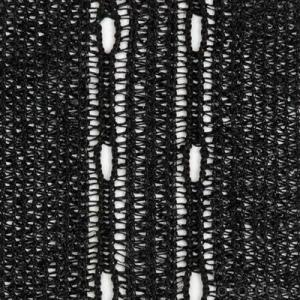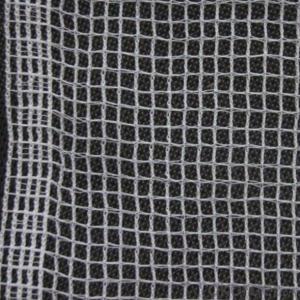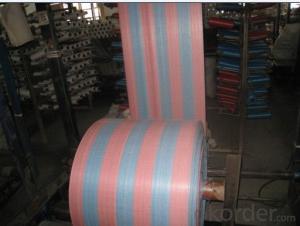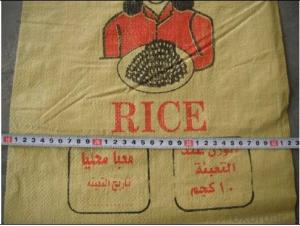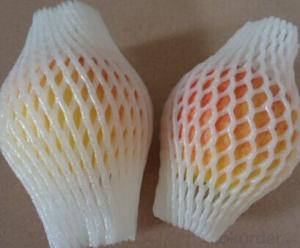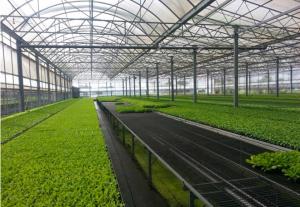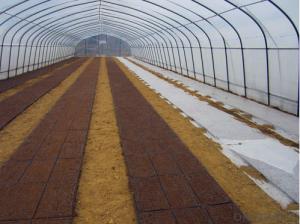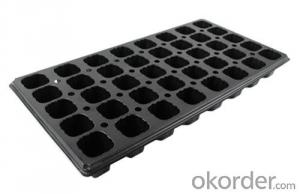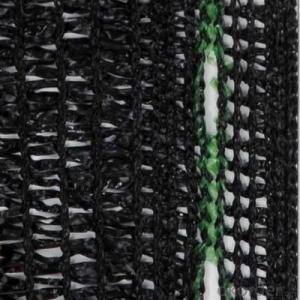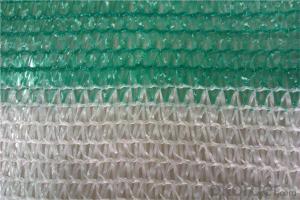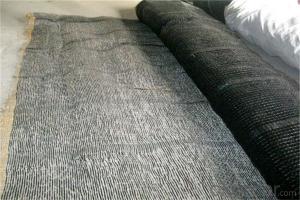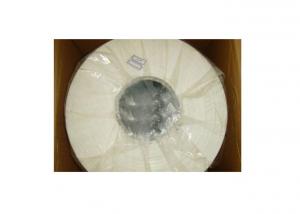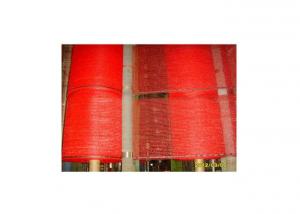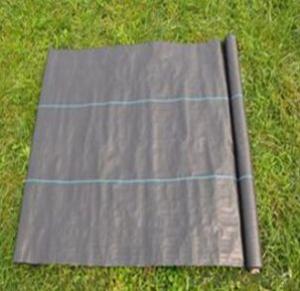Black sunshade net with high quality
- Loading Port:
- China Main Port
- Payment Terms:
- TT OR LC
- Min Order Qty:
- -
- Supply Capability:
- -
OKorder Service Pledge
OKorder Financial Service
You Might Also Like
Quick Details
Type: | Shade Sails & Enclosure Nets | Place of Origin: | Shandong China (Mainland) | | |
Shade rate: | 30%-95% | | | | |
Packaging & Delivery
Packaging Detail: | 1.one roll packed with one strong PP bag with one color label 2.one piece packed with one strong PP bag with one color label;several pieces put in a carton |
Delivery Detail: | 15days after the order |
Specifications
Material:HDPE+UV
Color :Black,Green,Red,Yellow,Blue,etc
Length: As your request
Width: 2~6m
Shade rate: 30%~95%,
Specifications : |
|
Description | 100% HDPE Green Sunshade net |
Material | HDPE(High-density polyethylene) |
Net weight | 50-350gsm (as your request) |
Net width | 6'x20'(1.83mx6.1m),Or other size is available (6meters Max.) |
Rolls Lengths | On request(10m,50m,100m,200m etc.) |
Shade rate | 30%-95% |
Colours | Green,Black ,Yellow,gray...... ( as your request) |
Type | Warp knitted |
U.V. | CIBA( 1-5 year) |
Supply capacity | 5tons per month |
Packing | 1.one roll packed with one strong PP bag. 2.one piece packed with one strong PP bag and several pieces put in a carton. 3.one roll packed with one strong PP bag and several one put in a woven bag. |
Terms of Payment | 1.30% T/T in advance,70%T/T after copy B/L. 2.L/C at sight;L/C 30days;L/C 45days. 3.Western union. |
Deliver time | 30-45 days after the order confirmed or the deposit released |
Function of shading net:
Shade net will Blocks sun &heat, Provides 75% More Shades, Lower temperature, Protect against harmful ultraviolet Rays
Used to provide shade against sunlight and control temperature
Shade net-can also be used-for-greenhouses to protect flowers, trees against frost ,and hail damage It can also used for playhouse ,temporary fencing,
shade fabrics give uniform shading and allow crops to retain more moisture. Our shades can help reduce temperature extremes on plants and slow heat loss at night.
Easy to install with optional accessories if necessary.
- Q: What are the benefits of using plastic pallets for transportation and storage?
- There are several benefits of using plastic pallets for transportation and storage. Firstly, plastic pallets are lightweight and can be easily handled, reducing the risk of injuries during loading and unloading. Secondly, they are durable and have a longer lifespan compared to other materials, resulting in cost savings over time. Additionally, plastic pallets are resistant to moisture, chemicals, and pests, ensuring the integrity of the goods being transported or stored. They are also stackable, allowing for efficient use of space and maximizing storage capacity. Lastly, plastic pallets are hygienic, as they can be easily cleaned and sanitized, making them ideal for industries with strict cleanliness requirements such as pharmaceuticals and food.
- Q: How do you choose the right ground cover for your specific landscape?
- Choosing the right ground cover for your specific landscape involves considering various factors such as the climate, soil conditions, sun exposure, maintenance requirements, and aesthetic preferences. Assessing these elements will help you determine if your landscape requires a ground cover that is drought-tolerant, shade-loving, erosion-resistant, or low-maintenance. Additionally, considering the overall design and desired visual impact will allow you to select a ground cover that complements and enhances the existing landscape features.
- Q: What are some ground cover options for areas with poor drainage?
- Some ground cover options for areas with poor drainage include creeping thyme, creeping juniper, sweet woodruff, and moss. These plants are known for their ability to tolerate wet conditions and help improve soil drainage.
- Q: Are nursery trays suitable for growing alpine plants?
- Yes, nursery trays can be suitable for growing alpine plants. These trays provide a controlled environment for seedlings or young plants, allowing for easier transplanting and protection from harsh weather conditions. However, it is important to ensure proper drainage and select trays that are deep enough to accommodate the root systems of alpine plants, as they typically have extensive and shallow root systems. Additionally, alpine plants may have specific soil and temperature requirements, which should be considered when using nursery trays for their cultivation.
- Q: Are nursery trays suitable for starting fruit trees?
- Yes, nursery trays are suitable for starting fruit trees. They provide a controlled environment for the seedlings, allowing for proper root development and easy transplanting once the trees are ready. Additionally, using nursery trays can help protect the young fruit trees from pests and diseases, promoting their healthy growth.
- Q: How do you remove unwanted ground cover?
- To remove unwanted ground cover, you can start by manually pulling it out, ensuring you remove the roots as well. Another option is to use a garden hoe or a sharp spade to cut through the ground cover and lift it out. Applying a layer of mulch or landscape fabric can also help smother and suppress the growth of unwanted ground cover. Additionally, selective herbicides can be used, but it is important to follow the instructions carefully and choose a product that specifically targets the type of ground cover you want to remove.
- Q: What are some ground cover options for regions with dry, desert-like conditions?
- Some ground cover options for regions with dry, desert-like conditions include succulents such as aloe vera, agave, and sedum, as well as drought-tolerant grasses like buffalo grass and blue grama. Other options include low-growing shrubs like desert marigold and Apache plume, as well as ground-hugging plants like creeping thyme and ice plant.
- Q: Can ground cover be used to create a low-maintenance lawn alternative?
- Yes, ground cover can be used as a low-maintenance lawn alternative. Ground cover plants such as clover, creeping thyme, or moss can provide a lush, green carpet-like appearance while requiring minimal mowing, watering, and fertilizing. They also help to prevent soil erosion, suppress weeds, and attract beneficial insects. However, it's important to choose the right ground cover for your specific climate, soil type, and sun exposure to ensure successful establishment and maintenance.
- Q: Can ground cover be used as a lawn replacement?
- Yes, ground cover can be used as a lawn replacement. Ground cover plants, such as creeping thyme or clover, can be an attractive and low-maintenance alternative to traditional grass lawns. They can provide a green and dense cover, suppress weeds, conserve water, and require less mowing and fertilization. Additionally, ground cover plants often have the added benefit of attracting pollinators and providing a natural habitat for beneficial insects.
- Q: Can agricultural plastic products be used for tissue culture?
- Yes, agricultural plastic products can be used for tissue culture. Tissue culture is a technique used to grow and maintain plant cells, tissues, or organs under sterile conditions. Agricultural plastic products, such as petri dishes, plates, containers, or bags, can be specifically designed and sterilized for tissue culture purposes. These products provide a controlled environment for the growth of plant tissues, ensuring the necessary nutrients, moisture, and protection from contaminants.
Send your message to us
Black sunshade net with high quality
- Loading Port:
- China Main Port
- Payment Terms:
- TT OR LC
- Min Order Qty:
- -
- Supply Capability:
- -
OKorder Service Pledge
OKorder Financial Service
Similar products
Hot products
Hot Searches
Related keywords
